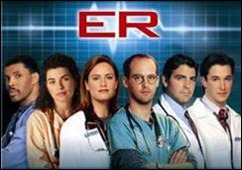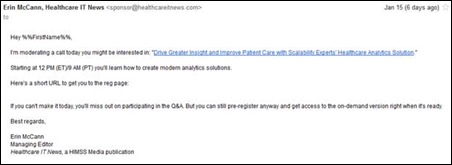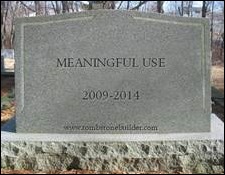Curbside Consult with Dr. Jayne 2/9/15
One of the most fun things about being part of the HIStalk team is the ability to interact with readers. I asked last week if the “Fireside Chat” at the ONC annual meeting (with former Senate Majority Leaders Tom Daschle and Bill Frist) actually had a fire. A reader quickly replied with his summary: “Well attended, interesting, some controversy, but an informative and enjoyable event.” But alas, no fire.

Another reader sent this sweet little bit of shoe love. It arrived in the middle of a crazy, crazy week and I enjoyed the smile it put on my face. I probably would have enjoyed the smile a little better if I hadn’t been caught multitasking in a meeting, when my grin made it clear I wasn’t paying attention to the ridiculous discussion around patient satisfaction scores that was going on at the time. I bet if we gave patients one of these treats at checkout, we’d get better scores. I’m not being flippant, but it’s at least as good as some of the plans I heard thrown out by the 24-year-old MBAs who seem to be running the place.

From the practicing physician side, many of us are at a point in our careers where the daily grind of dealing with insurance, regulators, and government entities seems to outweigh the satisfaction we get from actually caring for patients. I was inspired to hear from a young IT consultant who answered my question about, “If you could be anything you wanted, what would you be?”
I asked myself this very question last fall and decided without a doubt that I wanted to be a doctor. I have a liberal arts degree, almost zero science background, and have never taken the MCAT but am in the process of applying to post-baccalaureate pre-medical programs. Seeing firsthand how people approach healthcare convinced me that this was something I needed to do. Thanks for contributing to a great site and being part of the industry driving me towards my dream.
I sent back some words of encouragement and hope he will stay in touch. I don’t think many would argue with the idea that being part of the healing professions is a calling. Given all the pressures associated with healthcare today, I think it may be even more so than it has been in the past. My medical school class had a large number of people without science degrees and I know many medical schools are looking for non-traditional students, so I wish him the best of luck.
Another reader who has worked his way up through the industry over a lengthy career offered some options for what he would do if he had the choice to do something different:
- Start over. Go back to school and learn something new. Concentrate on helping people help themselves in this messed up world of healthcare.
- Change. Do something you love and you won’t work a day in your life. So maybe cooking or entertaining. Thoughts of starting a coffee shop or something very new and very social come to mind.
- Hang in there. Continue to fight the good fight and go down with the ship when the time comes – a comfortable option because I make good money and my schedule is mine (for the most part).
- Give up. Find some way to make a bunch of money so I don’t have to think about a career. Suing a doctor over something has interest!
I hope he was kidding about the last item, but some of the others do resonate. Right now I’m leaning towards his third bullet – hanging in there. At times my work is crazy, but there’s something to be said about the devil you know vs. the alternative. Option #2 definitely resonates. We used to tease one of our residency colleagues about her hobby of raising goats until the organic movement really took off. Now her income in the niche dairy business allows her to volunteer at a free clinic, which has been greatly satisfying.
In the same vein, one reader would become a professional volunteer. “I do my share of volunteering and giving back, but I always think I could do so much more.” Watching my parents volunteer during their retirement has been great and I’m glad they remain healthy enough to do so. My favorite answer to the “what would you do” question is from a long-time reader. I had to change a few of his answers to protect his anonymity, but I hope you have as much fun reading them as I did:
I would continue to battle the politics and personalities of a non-profit health system. I would work tirelessly for days on end for the same amount of money I could make delivering for FedEx or tending bar. I would get dressed up so that I can sit in a poorly-lit work area in a chair that has celebrated its own retirement working on a computer that can only be classified as “retro” to anyone else familiar with technology.
I would learn the names of the faceless consultants who roam the halls with shined shoes, sharp ties, and opinions on everything. I would let individuals that have no stake in the community or organization play Russian Roulette with our financial and social futures. I would wake up and be the butt of every motivational poster. I would be the buzzword people are looking for. I would wake up and do mock Joint Commission audits every day because it is fun and everyone loves the villain. I would “operationalize” bad ideas more. Since that is the new word, I would need to be great at it, because the consultants said so.
Although he paints a bleak future, it’s a good reminder to some of us about why we went into this in the first place. If I wanted to make more money than the night team at Taco Bell did, I would have quit during residency. (Yes, I did the math, and it wasn’t pretty). If I wanted glamour and a windowed corner office, I would have gone to business school or law school. If I wanted shiny shoes and sharp ties, I could have gone into pharma.
I chose healthcare, not for the saggy scrubs and rubberized clogs, but because I wanted to make things better. In the immortal words of Dr. Mark Greene, “Helping them is more important than how we feel.” Whether it’s a sick patient or an ailing hospital, I’m here to stay.

Email Dr. Jayne.






















You know what will radically improve patient lives? Universal healthcare, access to housing, paid childcare, better public transport. Improve a…